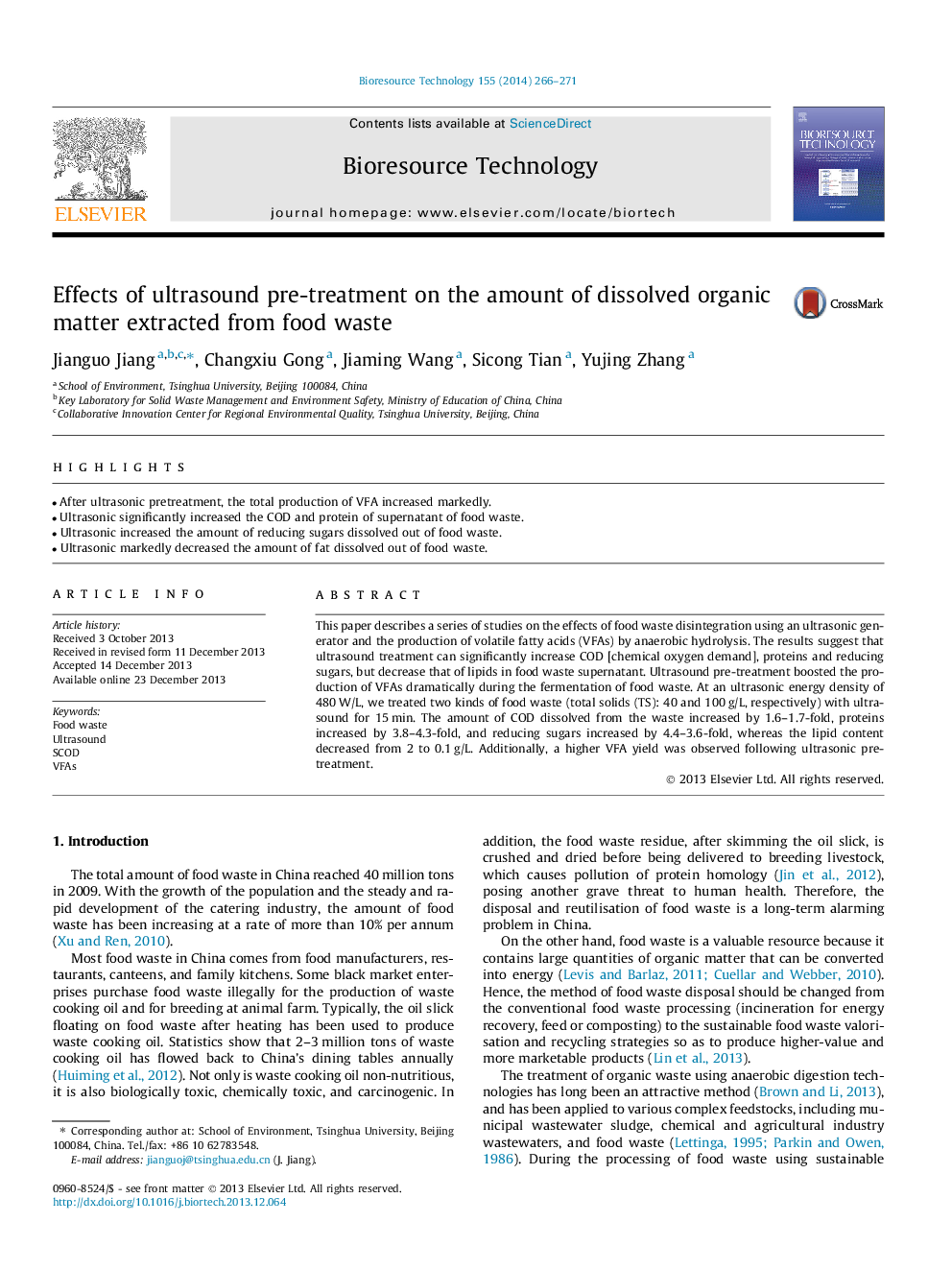| Article ID | Journal | Published Year | Pages | File Type |
|---|---|---|---|---|
| 680963 | Bioresource Technology | 2014 | 6 Pages |
•After ultrasonic pretreatment, the total production of VFA increased markedly.•Ultrasonic significantly increased the COD and protein of supernatant of food waste.•Ultrasonic increased the amount of reducing sugars dissolved out of food waste.•Ultrasonic markedly decreased the amount of fat dissolved out of food waste.
This paper describes a series of studies on the effects of food waste disintegration using an ultrasonic generator and the production of volatile fatty acids (VFAs) by anaerobic hydrolysis. The results suggest that ultrasound treatment can significantly increase COD [chemical oxygen demand], proteins and reducing sugars, but decrease that of lipids in food waste supernatant. Ultrasound pre-treatment boosted the production of VFAs dramatically during the fermentation of food waste. At an ultrasonic energy density of 480 W/L, we treated two kinds of food waste (total solids (TS): 40 and 100 g/L, respectively) with ultrasound for 15 min. The amount of COD dissolved from the waste increased by 1.6–1.7-fold, proteins increased by 3.8–4.3-fold, and reducing sugars increased by 4.4–3.6-fold, whereas the lipid content decreased from 2 to 0.1 g/L. Additionally, a higher VFA yield was observed following ultrasonic pre-treatment.
